running into issues while plotting stock data in ggplot2 and with an x-axis that contains gaps from weekends and holidays. this post has been very helpful, but i run into a variety of issues when trying to use ordered factors.
library(xts)
library(grid)
library(dplyr)
library(scales)
library(bdscale)
library(ggplot2)
library(quantmod)
getSymbols("SPY", from = Sys.Date() - 1460, to = Sys.Date(), adjust = TRUE, auto.assign = TRUE)
input <- data.frame(SPY["2015/"])
names(input) <- c("Open", "High", "Low", "Close", "Volume", "Adjusted")
# i've tried changing rownames() to index(), and the plot looks good, but the x-axis is inaccurate
# i've also tried as.factor()
xaxis <- as.Date(rownames(input))
input$xaxis <- xaxis
p <- ggplot(input)
p <- p + geom_segment(aes(x = xaxis, xend = xaxis, y = Low, yend = High), size = 0.50) # body
p <- p + geom_segment(aes(x = xaxis - 0.4, xend = xaxis, y = Open, yend = Open), size = 0.90) # open
p <- p + geom_segment(aes(x = xaxis, xend = xaxis + 0.4, y = Close, yend = Close), size = 0.90) # close
p <- p + scale_y_continuous(scale_y_log10())
p + ggtitle("SPY: 2015")
The plot above (sans red boxes) is generated with the above code segment. And the following charts are some of the issues when attempting some solutions. First, if I try using the data frame's index, I will generate I nice looking graph, but the x-axis is inaccurate; the data currently ends in October, but in the plot below it ends in July:

xaxis <- as.Date(index(input))
Second, if I try coercing the rownames to an ordered factor, I lose my horizontal tick data (representing the open and the close).

xaxis <- factor(rownames(input), ordered = TRUE)
The same issue of removing the horizontal ticks happens if I use the package bdscale, but the gridlines are cleaner:
p <- p + scale_x_bd(business.dates = xaxis)




